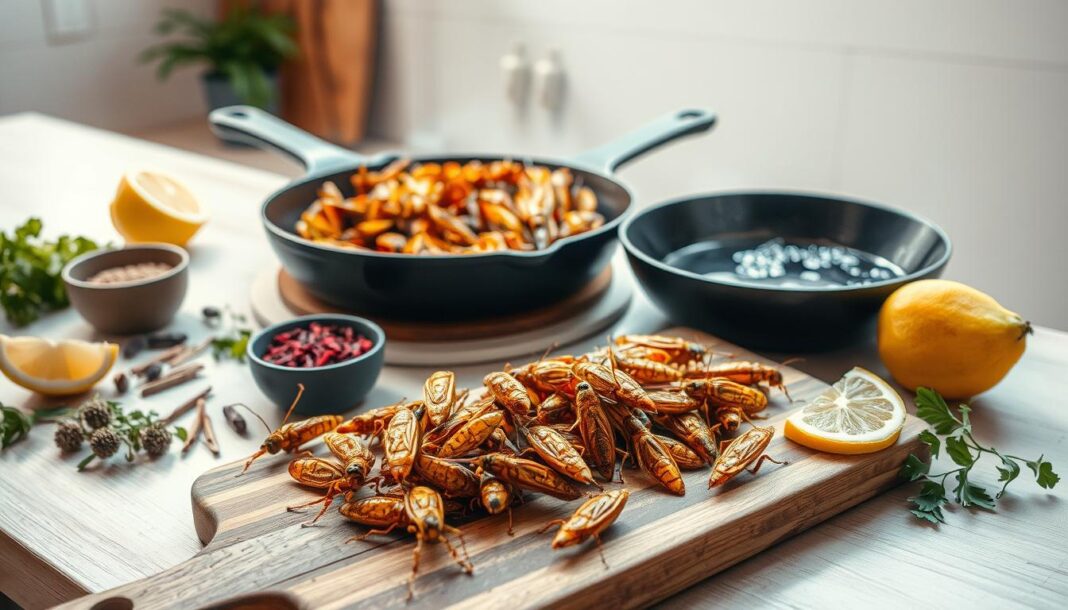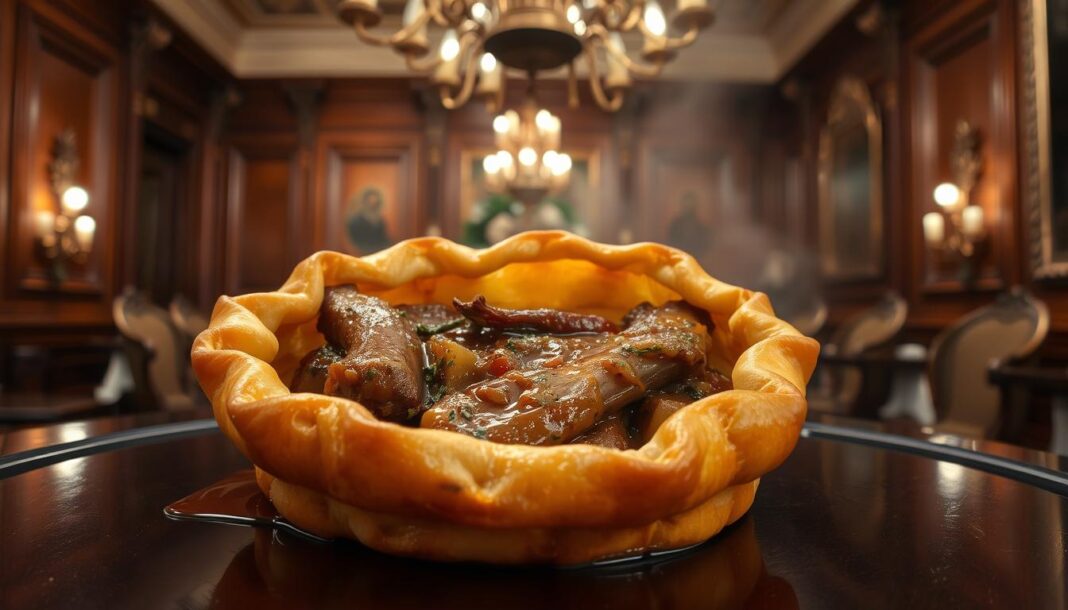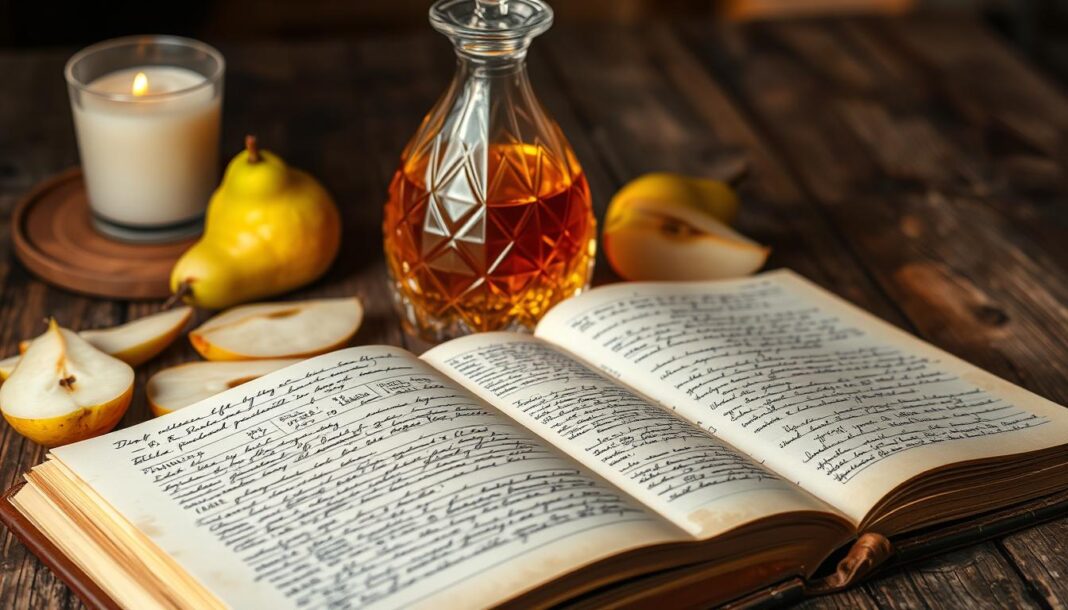For thousands of years, locusts have been a part of human culinary traditions across multiple continents. We explore the fascinating world of cooking these insects, which offer a unique taste profile that combines nutty, shrimp-like flavors.
Cooking locusts can open up new culinary horizons, providing a sustainable, protein-rich food source that’s gaining popularity. Our comprehensive guide covers everything from selecting and preparing locusts to cooking them using different methods.
By the end of this article, you’ll have the knowledge and confidence to incorporate this nutritious food into your culinary repertoire, making it accessible for people of all cooking levels.
Understanding Locusts as a Food Source
As a sustainable food source, locusts are gaining attention globally for their nutritional benefits and cultural significance. Locusts have been consumed by humans for thousands of years, particularly in Africa, the Middle East, and Asia, where they are considered a delicacy.
Nutritional Benefits
Locusts are packed with high levels of protein, comparable to beef, and essential minerals like zinc and iron. They contain approximately 65-70% protein content by dry weight, making them an attractive option for those seeking sustainable protein alternatives. The nutritional profile of locusts also includes beneficial fatty acids, contributing to their value as a nutritious food choice.
Cultural Significance
In many cultures, locusts are not just a source of nutrition but also hold significant cultural value. They have been historically harvested during swarms and transformed from pests into a valuable food resource. The taste profile of locusts, often described as nutty with subtle seafood notes, makes them approachable for those new to entomophagy. Locusts are distinct from grasshoppers, belonging to the same family but differing in behavior and swarming tendencies.
Preparing Locusts for Cooking
Before you start cooking locusts, it’s essential to prepare them properly to bring out their best flavor and texture. This involves several key steps that ensure your locust dish is not only delicious but also safe to eat.
Selecting and Harvesting Locusts
Selecting the right locusts is crucial. We recommend focusing on size, freshness, and developmental stage. The sub-adult or 3rd instar locusts are often preferred for their optimal flavor and texture. Harvesting techniques vary, ranging from manual collection to using big sweeping nets or insect-sucking machines, each with its advantages depending on the situation.
Cleaning and Removing Inedible Parts
To improve both texture and appearance, it’s necessary to remove the inedible parts of the locusts. Begin by stripping the locusts’ wings and legs. Removing the head is also crucial as it pulls out the viscera, which can impart bitter flavors if left intact. Rinsing the locusts in cold water helps remove any dirt or debris.
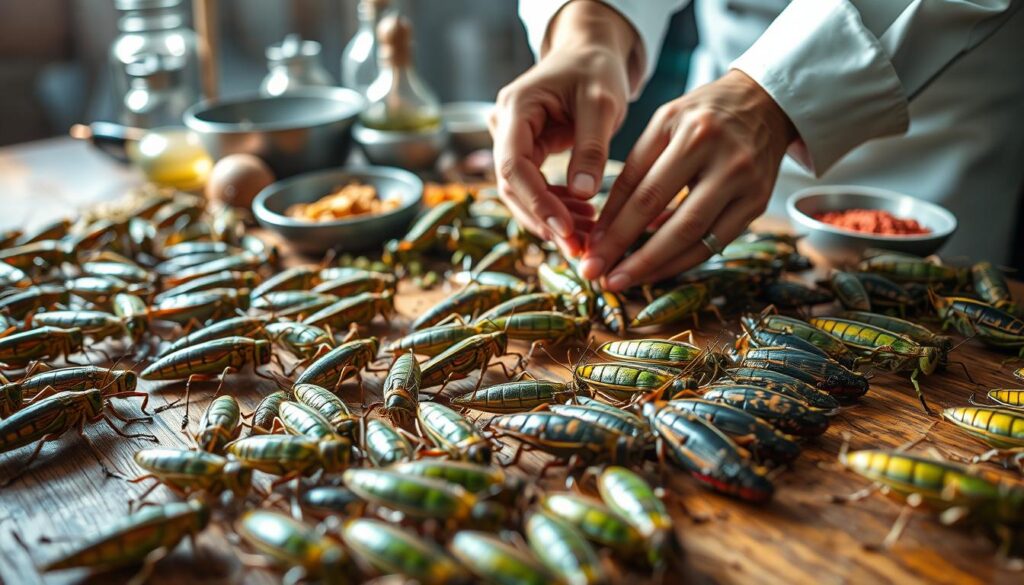
Pre-Cooking Treatments
Pre-cooking treatments such as purging, which involves allowing locusts to empty their digestive tracts, and blanching in boiling water can significantly improve flavor and food safety. Properly storing cleaned locusts if not cooking immediately is also vital to maintain their quality and nutritional value.
| Preparation Step | Purpose | Method |
|---|---|---|
| Removing Wings and Legs | Improve Texture and Appearance | Strip legs and wings from locusts |
| Rinsing | Remove Dirt and Debris | Rinse in cold water |
| Purging and Blanching | Improve Flavor and Safety | Purge digestive tracts; Blanch in boiling water |
How to Cook Locust: Essential Techniques
Mastering the art of cooking locusts involves understanding various techniques that bring out their unique flavors and textures. Cooking locusts can be a straightforward process if you follow the right methods. Here, we’ll explore the essential techniques to prepare locusts, making them a delicious and nutritious addition to your meals.
Boiling Method
Boiling is a fundamental technique for cooking locusts, typically requiring 3-5 minutes in salted water. This method not only cooks the locusts but also serves as a crucial preparation step for other cooking techniques. Adding turmeric or other spices to the boiling water can enhance the flavor and help purify the locusts. To boil locusts, simply place them in a pot of salted water and boil until they are tender.
Roasting and Baking Techniques
Roasting locusts in the oven brings out their nutty flavors, with optimal results achieved at 170°C (340°F) for 12-15 minutes. A light coating of oil and salt enhances the flavor and texture. To achieve the perfect crispness, arrange the locusts in a single layer on a baking sheet to ensure even cooking and prevent burning.
Frying Locusts to Perfection
Frying is another popular method for cooking locusts, producing exceptionally crispy results. You can use various coatings, from seasoned flour to tempura batter, to achieve different textures. For deep-frying, heat the oil to 180°C (350°F) and fry until the locusts are crispy. This method yields a delicious snack or appetizer.
Delicious Locust Recipes to Try
In this section, we’ll dive into the delicious world of locust recipes, featuring innovative and tasty dishes that will elevate your culinary experience. Locusts can be prepared in various ways, making them a versatile ingredient for any meal.
Crispy Fried Locusts with Seasoning
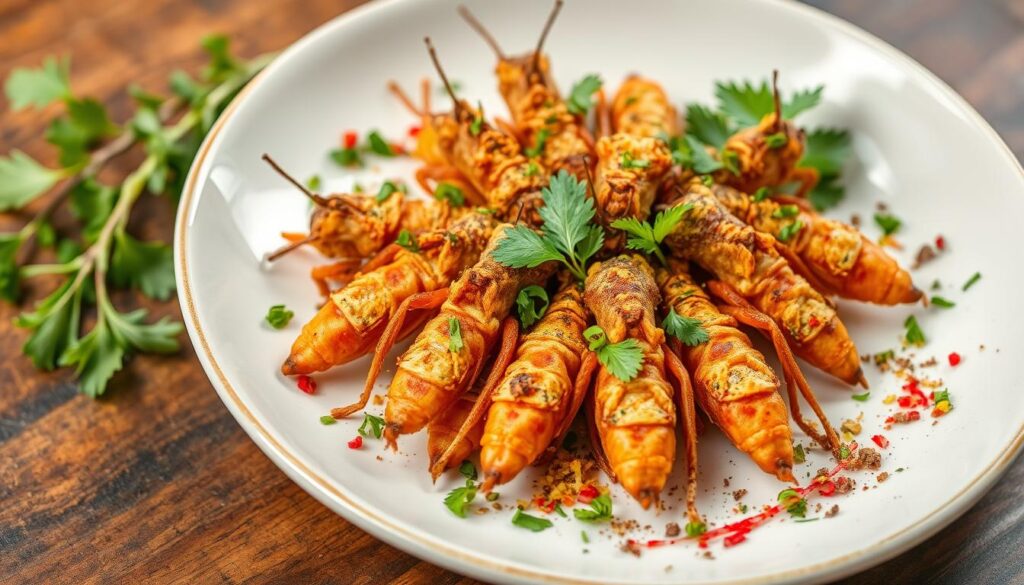
Crispy Fried Locusts are made by boiling locusts in seasoned stock, then coating them in a flavorful mixture of flour, salt, pepper, and spices, before frying until golden brown. This dish is both visually appealing and delicious.
Locust “Schnitzel” with Tahini Sauce
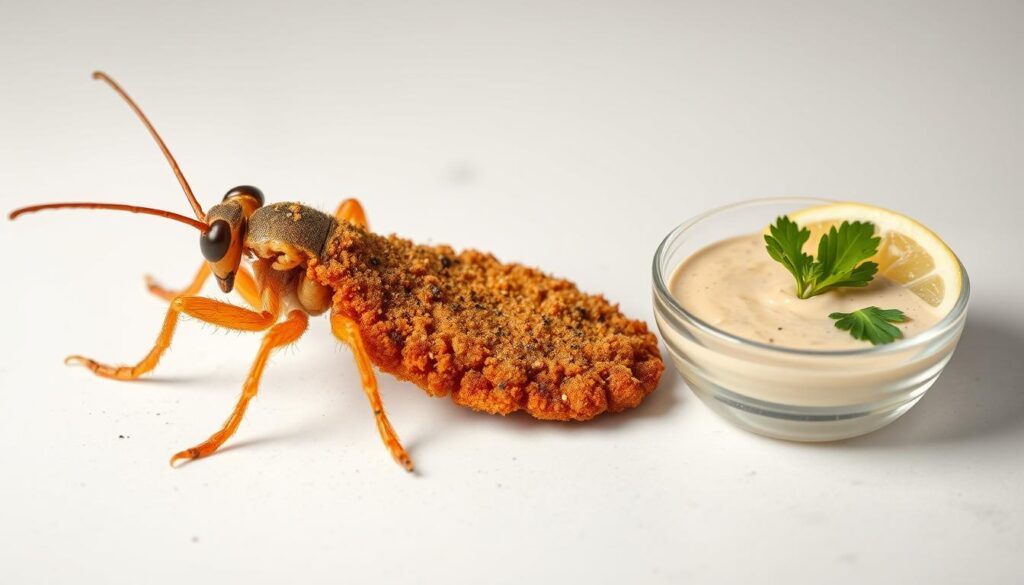
Our Locust “Schnitzel” recipe transforms locusts into a familiar format by coating them in flour, egg, and seasoned breadcrumbs before frying. Serve with a lemony tahini sauce for a perfect balance of flavors.
Roasted Desert Locust with Wild Garlic

The Roasted Desert Locust recipe uses sub-adult locusts roasted with butter and salt until crisp. The accompanying wild garlic emulsion adds a sophisticated flavor dimension to this dish.
Serving and Enjoying Your Locust Dishes
Locusts, with their distinctive taste and versatility, are poised to become a new favorite ingredient for adventurous cooks. When serving locust dishes, we recommend pairing them with complementary sauces like lemony tahini or za’atar pesto to enhance their unique flavor profile, often described as reminiscent of quail or sunflower seeds.
To elevate the dining experience, consider the textural contrast between the crispy exterior and tender interior of properly cooked locusts, and don’t hesitate to experiment with different beverage pairings, such as craft beers or white wines.
